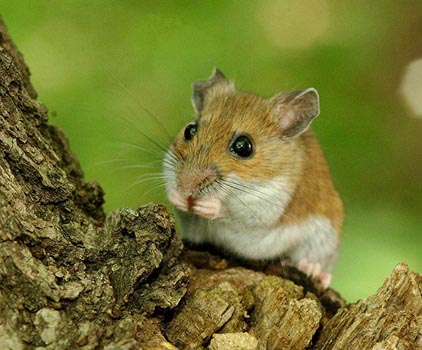Sex ratio allocation has important fitness consequences, and theory predicts that parents should adjust offspring sex ratio in cases where the fitness returns of producing male and female offspring vary. The ability of fathers to bias offspring sex ratios has traditionally been dismissed given the expectation of an equal proportion of X- and Y-chromosome-bearing sperm (CBS) in ejaculates due to segregation of sex chromosomes at meiosis. This expectation has been recently refuted. In this study, the white-footed mouse was used to demonstrate that sex ratio is explained by an exclusive effect of the father, and suggest a likely mechanism by which male-driven sex-ratio bias is attained. A male sperm morphological marker associated with the mechanism leading to sex ratio bias was identified; differences among males in the sperm nucleus area explain 22% variation in litter sex ratio. The study further shows the role played by the sperm nucleus area as a mediator in the relationship between individual genetic variation and sex-ratio bias. Fathers with high levels of genetic variation had ejaculates with a higher proportion of sperm with small nuclei area. This, in turn, led to siring a higher proportion of sons. These results reveal a plausible mechanism underlying unexplored male-driven sex-ratio biases. Why this pattern of paternal bias can be adaptive is also discussed. This research puts to rest the idea that father contribution to sex ratio variation should be disregarded in vertebrates, and will stimulate research on evolutionary constraints to sex ratios—for example, whether fathers and mothers have divergent, coinciding, or neutral sex allocation interests. Finally, these results offer a potential explanation for those intriguing cases in which there are sex ratio biases, such as in humans. informacion[at]ebd.csic.es: Malo et al (2017) A father effect explains sex-ratio bias. Proc R Soc B DOI: 10.1098/rspb.2017.1159
http://rspb.royalsocietypublishing.org/content/284/1861/20171159

 Las altas temperaturas están provocando que las lagunas y las marismas de Doñana pierdan agua rápidamente
Las altas temperaturas están provocando que las lagunas y las marismas de Doñana pierdan agua rápidamente




